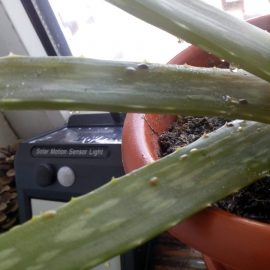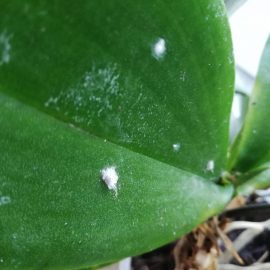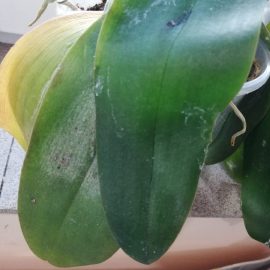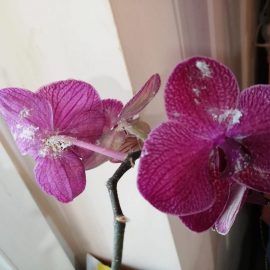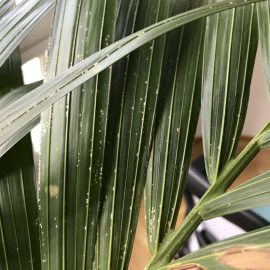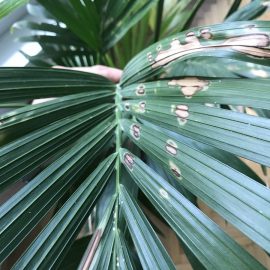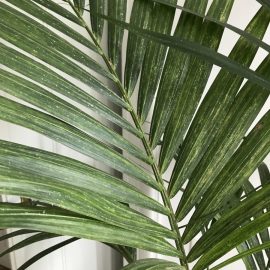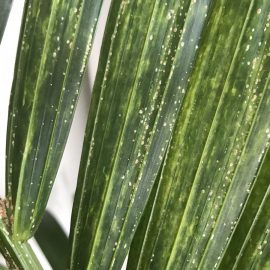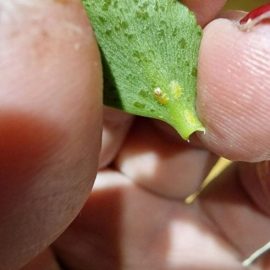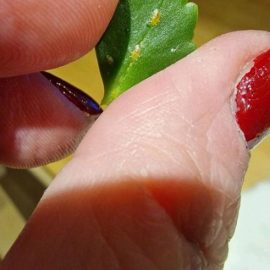Mealybugs in ornamental plants – pest management
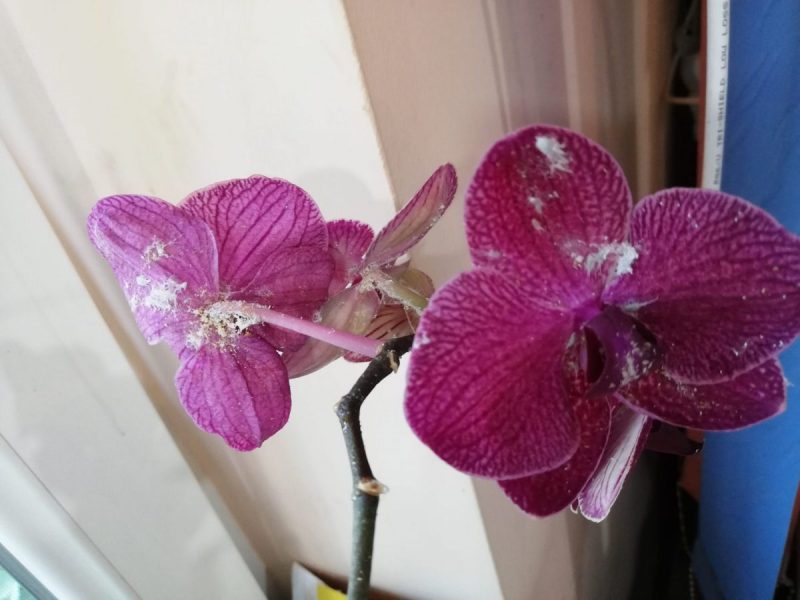
Houseplants are generally attacked by two species of mealybugs: Pseudococcus longispinus (long-tailed mealybug) and Planococcus citri (citrus mealybug), which are part of the Pseudococcidae family. Both species feed on the intracellular fluid of plants, attacking by stinging and sucking.
Attack detection
Mealybugs attack can be detected by the presence of a whitish fuzz, accompanied by a white powder. They secrete a transparent, sticky substance, called “honeydew”, which promotes the appearance of sooty mold (which manifests itself as a black powder). In some cases, you can see the insects, which have an oval-elongated body (3-7 mm long), pink, slightly yellow. Their body is covered with a layer of white wax.
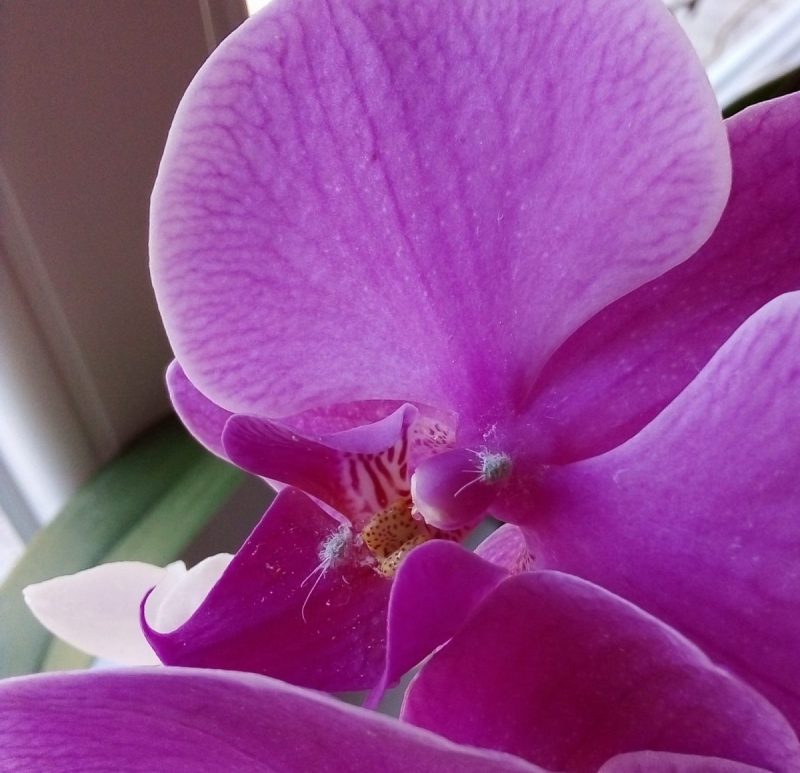
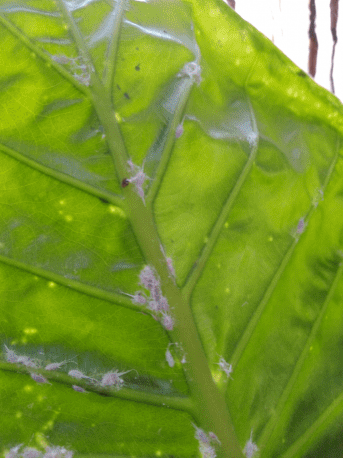
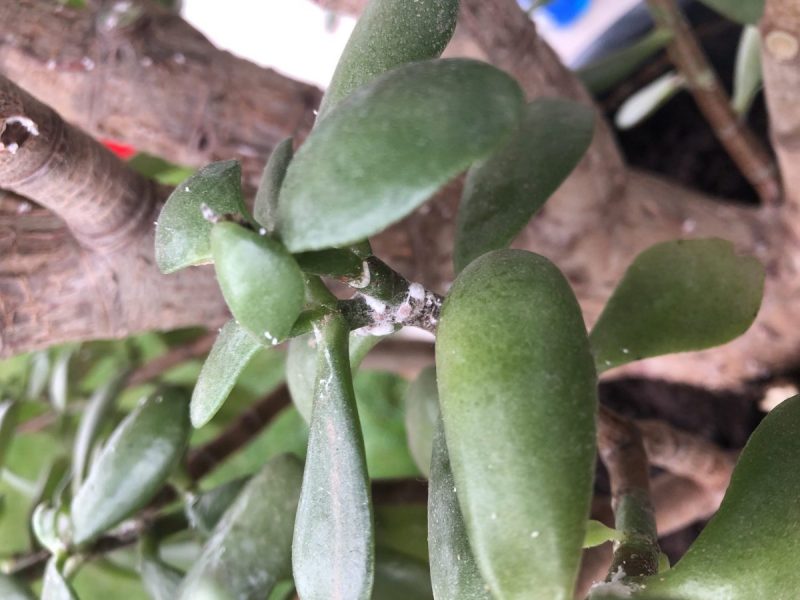
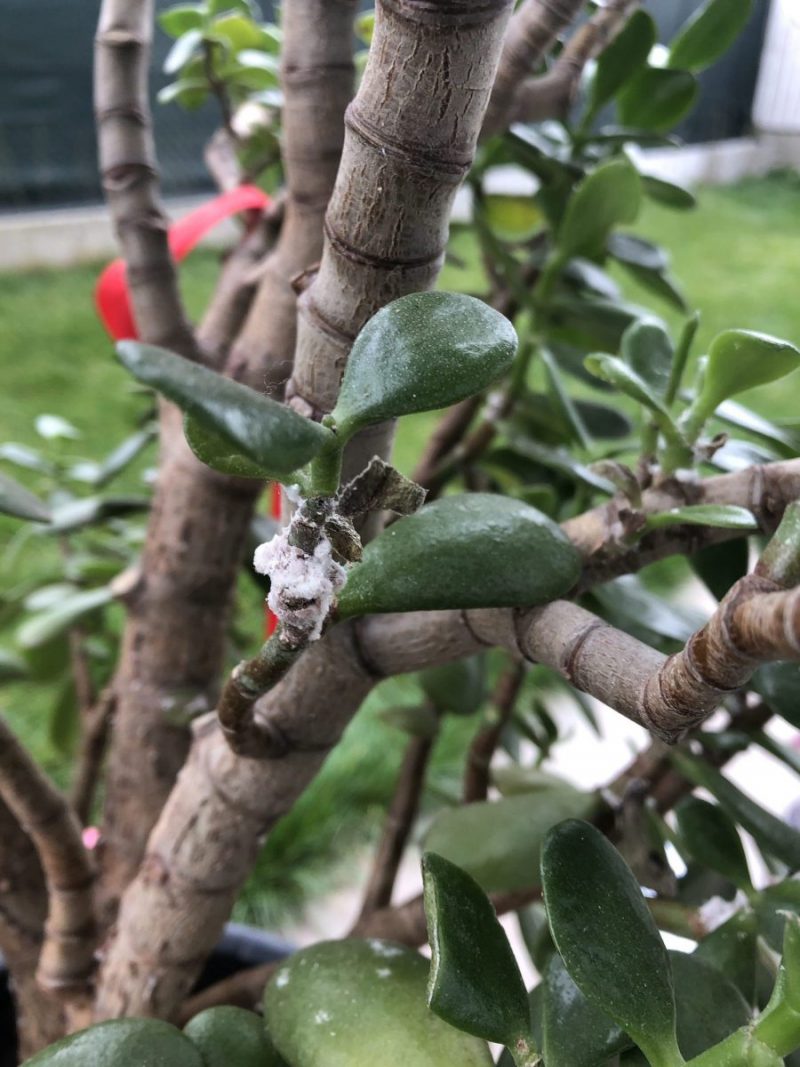
Attacked plants and damages
Mealybugs are polyphagous species. They attack several species of decorative plants, grown indoors. However, they prefer plants with thick, hard, and smooth leaves. Following the attack, the affected plants lose their leaves, the flower buds no longer open and fall, the growth is slowed, and finally, the plant dries out.
Control
To control mealybugs is recommended to carry out treatments with systemic insecticides. They penetrate the plant and circulate through the intracellular fluid with which the pests will feed.
Recommended products
-
You can find products on a different store
Change Store -
You can find products on a different store
Change Store -
You can find products on a different store
Change Store -
You can find products on a different store
Change Store -
You can find products on a different store
Change Store -
You can find products on a different store
Change Store -
You can find products on a different store
Change Store -
You can find products on a different store
Change Store -
You can find products on a different store
Change Store -
You can find products on a different store
Change Store -
You can find products on a different store
Change Store -
You can find products on a different store
Change Store -
You can find products on a different store
Change Store -
You can find products on a different store
Change Store -
You can find products on a different store
Change Store -
You can find products on a different store
Change Store -
You can find products on a different store
Change Store -
You can find products on a different store
Change Store -
You can find products on a different store
Change Store -
You can find products on a different store
Change Store -
You can find products on a different store
Change Store -
You can find products on a different store
Change Store -
You can find products on a different store
Change Store -
You can find products on a different store
Change Store
To favor penetration of the insecticide through the wax layer, it is recommended to add an adjuvant in the treatment solution. Because they are more difficult to fight, 2-3 treatments should be performed against these pests every 5-7 days, depending on the evolution of the attack.
Recommended products
-
You can find products on a different store
Change Store -
You can find products on a different store
Change Store -
You can find products on a different store
Change Store -
You can find products on a different store
Change Store -
You can find products on a different store
Change Store -
You can find products on a different store
Change Store -
You can find products on a different store
Change Store -
You can find products on a different store
Change Store -
You can find products on a different store
Change Store -
You can find products on a different store
Change Store -
You can find products on a different store
Change Store -
You can find products on a different store
Change Store -
You can find products on a different store
Change Store -
You can find products on a different store
Change Store -
You can find products on a different store
Change Store -
You can find products on a different store
Change Store -
You can find products on a different store
Change Store -
You can find products on a different store
Change Store -
You can find products on a different store
Change Store -
You can find products on a different store
Change Store -
You can find products on a different store
Change Store -
You can find products on a different store
Change Store -
You can find products on a different store
Change Store -
You can find products on a different store
Change Store
A few days after the end of the treatments, it is recommended to apply special fertilizers to promote plant regeneration following the stress suffered.
Recommended products
-
You can find products on a different store
Change Store -
You can find products on a different store
Change Store -
You can find products on a different store
Change Store -
You can find products on a different store
Change Store -
You can find products on a different store
Change Store -
You can find products on a different store
Change Store -
You can find products on a different store
Change Store -
You can find products on a different store
Change Store -
You can find products on a different store
Change Store -
You can find products on a different store
Change Store -
You can find products on a different store
Change Store -
You can find products on a different store
Change Store -
You can find products on a different store
Change Store -
You can find products on a different store
Change Store -
You can find products on a different store
Change Store -
You can find products on a different store
Change Store -
You can find products on a different store
Change Store -
You can find products on a different store
Change Store -
You can find products on a different store
Change Store -
You can find products on a different store
Change Store -
You can find products on a different store
Change Store -
You can find products on a different store
Change Store -
You can find products on a different store
Change Store -
You can find products on a different store
Change Store
In addition:
- it is very important to dose the insecticides according to the recommendations on the package. Not complying with the doses favors the appearance of resistant specimens.
- mealybugs can be easily confused with another pest, the citrus flatid planthopper (Metcalfa pruinosa), whose attack is similar.
- the difference is that when crushed, mealybugs release a bloody substance, and the citrus flatid planthoppers jump off the plant before being caught.
- the environmental conditions that favor the appearance of the pests are: high humidity and temperatures above 22° C.














































































































































































































































































































































































































































